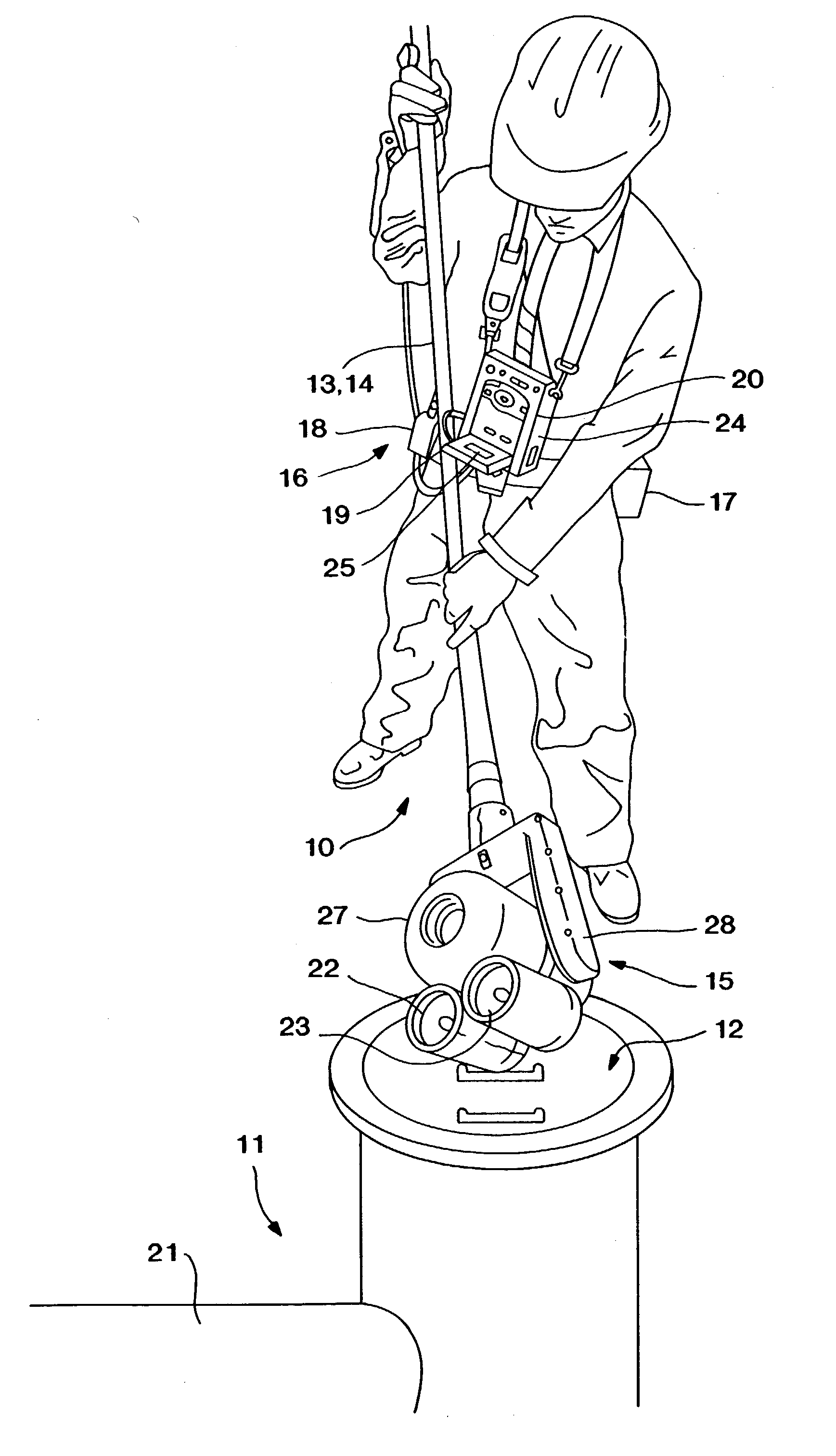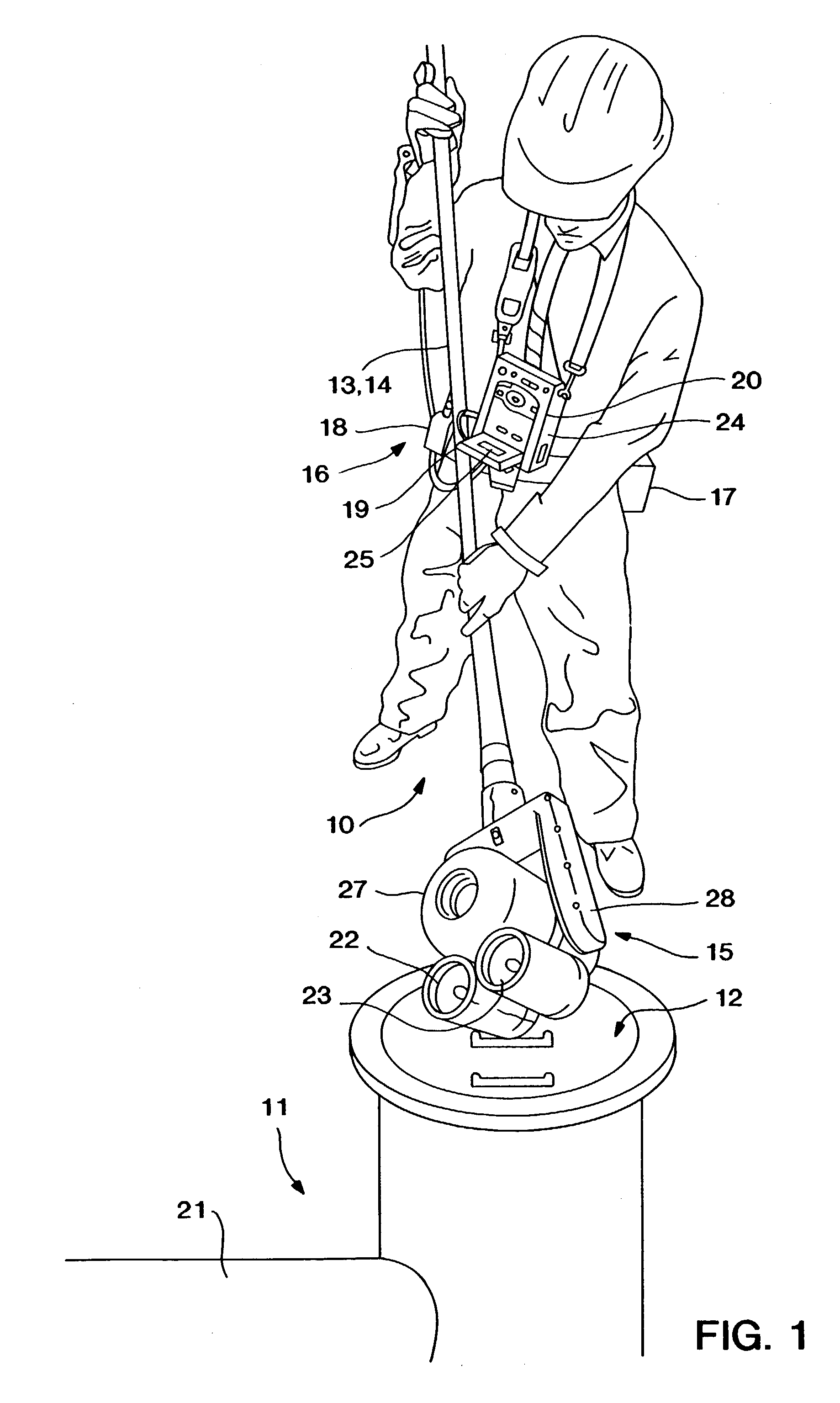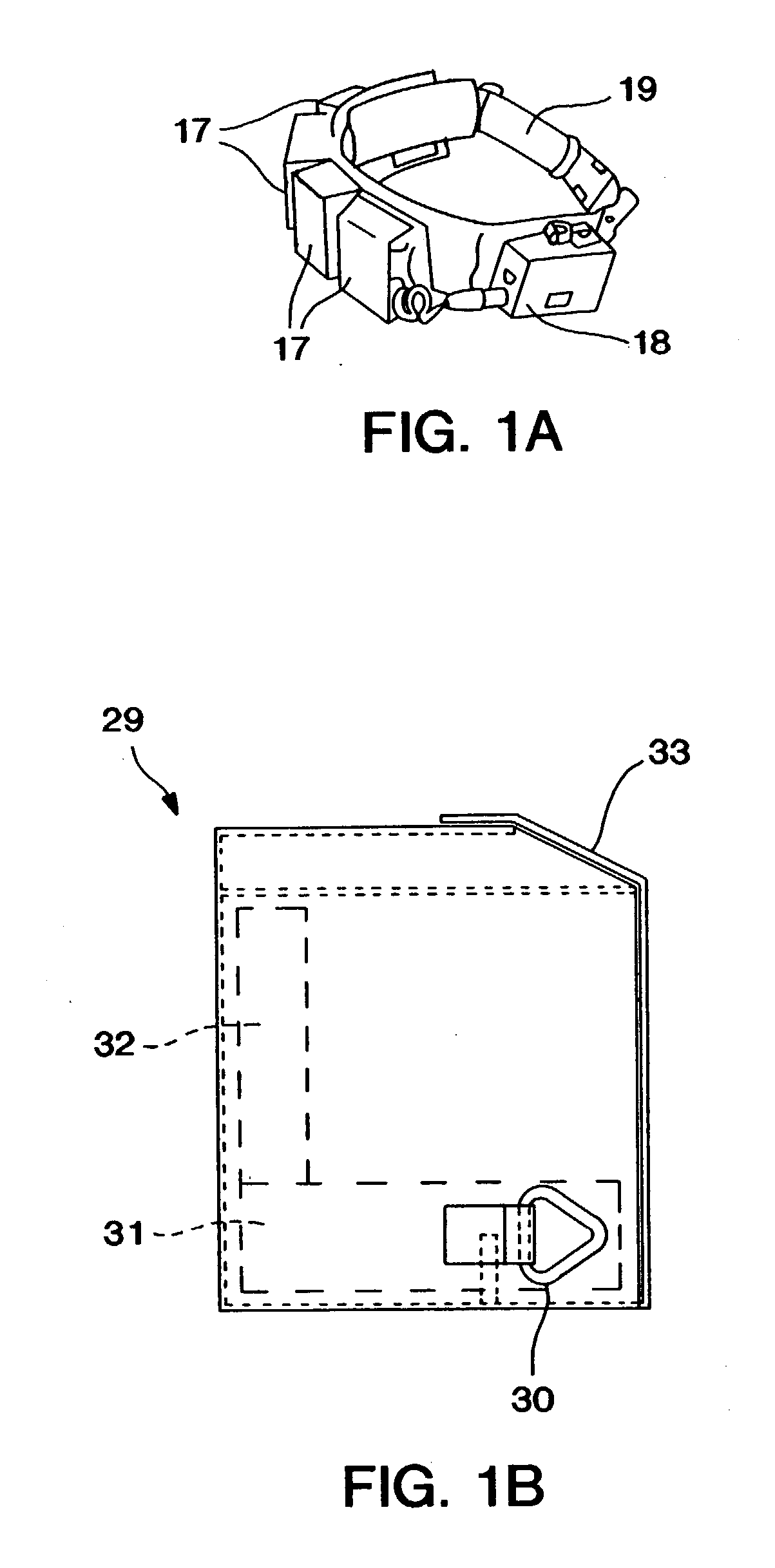Inspection system and method
a technology of inspection system and inspection method, applied in the field of inspection system and method, can solve the problems of inconvenient and time-consuming nature of performing the initial inspection, affecting the quality of inspection results, and requiring a great deal of time to set up and operate, so as to achieve quick and convenient non-invasive and convenient positioning
- Summary
- Abstract
- Description
- Claims
- Application Information
AI Technical Summary
Benefits of technology
Problems solved by technology
Method used
Image
Examples
Embodiment Construction
[0028] Referring to the drawings, FIG. 1 shows a user using a preferred embodiment of the inspection system 10 to ascertain whether an invasive procedure is warranted. Using the system comprises the steps of (a) positioning an imaging system 15 independently of a support system 16 such that a target area is in the field of view while at a first magnification level; (b) imaging a target area at a second magnification level greater than the first magnification level; (c) outputting an image of the target area; (d) evaluating the image to determine whether the target area is acceptable or whether an invasive procedure is warranted, and (e) performing the invasive procedure if necessary. Each of these steps is considered in greater detail below. It should be understood, however, that the classification of the process in these discrete steps is for illustrative purposes and should not be construed to limit the scope of the invention. For example, it is anticipated that two or more steps ...
PUM
| Property | Measurement | Unit |
|---|---|---|
| focal length | aaaaa | aaaaa |
| focal length | aaaaa | aaaaa |
| area | aaaaa | aaaaa |
Abstract
Description
Claims
Application Information
 Login to View More
Login to View More - R&D
- Intellectual Property
- Life Sciences
- Materials
- Tech Scout
- Unparalleled Data Quality
- Higher Quality Content
- 60% Fewer Hallucinations
Browse by: Latest US Patents, China's latest patents, Technical Efficacy Thesaurus, Application Domain, Technology Topic, Popular Technical Reports.
© 2025 PatSnap. All rights reserved.Legal|Privacy policy|Modern Slavery Act Transparency Statement|Sitemap|About US| Contact US: help@patsnap.com



